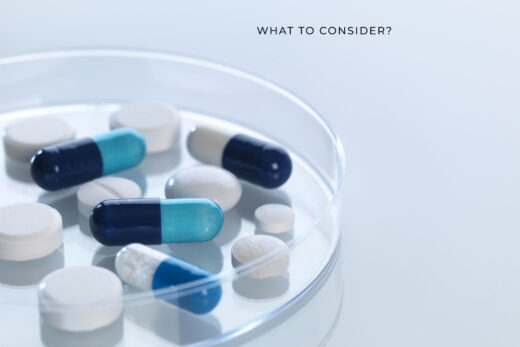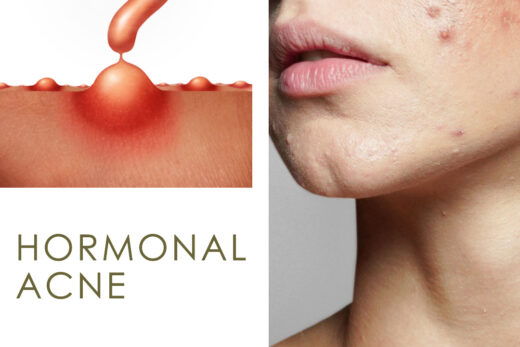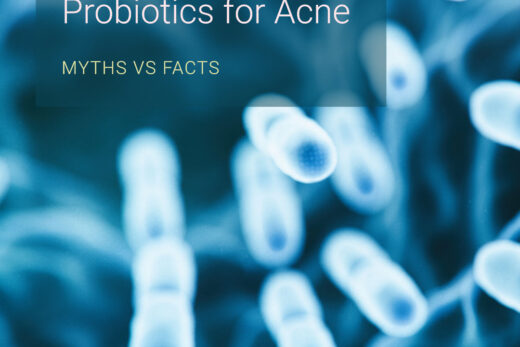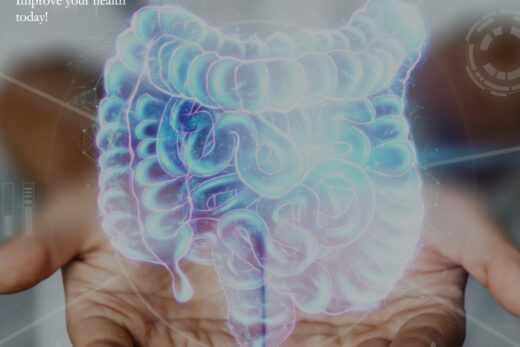Acne is a common skin condition that affects millions of people worldwide. It develops when hair follicles become clogged with oil and dead skin cells, resulting in a variety of skin blemishes. The causes, types, and misconceptions about acne are many, but this article seeks to provide a comprehensive understanding of this complex condition.
The Root Causes of Acne
Acne development involves a multifaceted interplay of factors. Overactive sebaceous glands produce an excess of oil, which, when combined with dead skin cells, can clog pores. This environment becomes a breeding ground for Propionibacterium acnes, a bacterium that causes inflammation and acne symptoms.
Key Takeaways #1
Acne Vulgaris and Acne Inversa Explained
Acne vulgaris and acne inversa (also known as hidradenitis suppurativa) are distinct types of acne distinguished by their root causes.
Acne Vulgaris
Acne vulgaris is the most common form of acne, primarily caused by hormonal changes that lead to excess oil production. This oil, combined with dead skin cells, can clog pores, creating an environment conducive to the growth of the bacteria Propionibacterium acnes, resulting in inflammation and typical acne symptoms.
Acne Inversa (Hidradenitis Suppurativa)
Acne inversa, also known as hidradenitis suppurativa, is a chronic skin condition that produces lumps in places like the armpits or groin. Unlike acne vulgaris, it’s not due to plugged hair follicles but is thought to result from abnormalities in the immune system or hormonal imbalances.
Key Takeaways #2
Decoding Acne: An In-depth Look at Acne Lesions
Non-Inflammatory Acne Lesions
Blackheads (Open Comedones)
Blackheads are a type of acne lesion that appears black or dark gray. Despite the common misconception, their color is not due to dirt but oxidation of the sebum and dead skin cells that have accumulated within the pore. They’re called “open” comedones because the pore remains open to the surface of the skin, which allows the blockage to oxidize and darken
Whiteheads (Closed Comedones)
Whiteheads are similar to blackheads in that they are also caused by the accumulation of sebum and dead skin cells in the hair follicle. However, unlike blackheads, the pore is closed at the surface, hence the term “closed” comedones. Because the pore is closed, the blockage does not oxidize and remains white or skin-colored.
Pseudocysts
Unlike true cysts, pseudocysts do not have a clear epithelial lining. They typically result from inflammation in the skin, such as in cases of severe acne. Pseudocysts are essentially pockets of inflammation and can contain fluid or semi-solid material. They are considered non-inflammatory because they don’t contain pus and don’t result from a typical inflammatory response.
Inflammatory Acne Lesions:
Papules
Papules are a type of inflammatory acne that appears as small, red, tender bumps on the skin. They occur when the walls of the pore break down due to the severe inflammation caused by oil, bacteria, and dead skin cells trapped inside. Despite their red and inflamed appearance, papules do not contain pus.
Pustules
Pustules are like papules but are filled with pus, giving them a yellow or white center capped with a reddish base. They form when the walls of the hair follicle break down, allowing white blood cells (pus) to flood the area, resulting in a pustule.
Nodules (Severe Form of Acne)
Nodules are severe inflammatory lesions that are embedded deep within the skin and feel hard to the touch. They are larger and more painful than papules or pustules, and they occur when clogged, swollen pores endure further irritation and grow larger. Unlike pustules and papules, nodules are characterized by their larger size, longer lifespan, and potential to leave scars.
Cysts (Severe Form of Acne)
Cysts are another type of severe inflammatory lesion. They are large, pus-filled lumps that look similar to boils and are the most severe form of acne. They develop when the pore’s walls rupture, leading to a severe inflammatory reaction that can cause deep and painful lesions. Cysts often lead to scarring and require professional medical treatment to prevent complications.
Key Takeaways #3
- Non-Inflammatory Acne Lesions are characterized by blockages in the pores, leading to blackheads and whiteheads, and pockets of inflammation known as pseudocysts. They lack the typical signs of inflammation, such as pus.
- Blackheads (Open Comedones): Dark lesions due to oxidation of sebum and dead skin cells in open pores.
- Whiteheads (Closed Comedones): White or skin-colored lesions due to sebum and dead skin cells trapped in closed pores.
- Pseudocysts: Pockets of inflammation without a clear epithelial lining, resulting from severe skin inflammation.
- Inflammatory Acne Lesions involve an inflammatory response that causes visible changes in the skin, such as redness, swelling, and pus. This category includes papules, pustules, and severe forms like nodules and cysts.
- Papules: Small, red, tender bumps caused by severe inflammation and breakdown of pore walls.
- Pustules: Similar to papules but filled with pus due to the influx of white blood cells.
- Nodules (Severe Form): Large, painful lesions embedded deep within the skin, characterized by their potential to scar.
- Cysts (Severe Form): Large, pus-filled lumps that develop from ruptured pore walls, often leading to scarring and requiring professional treatment.




